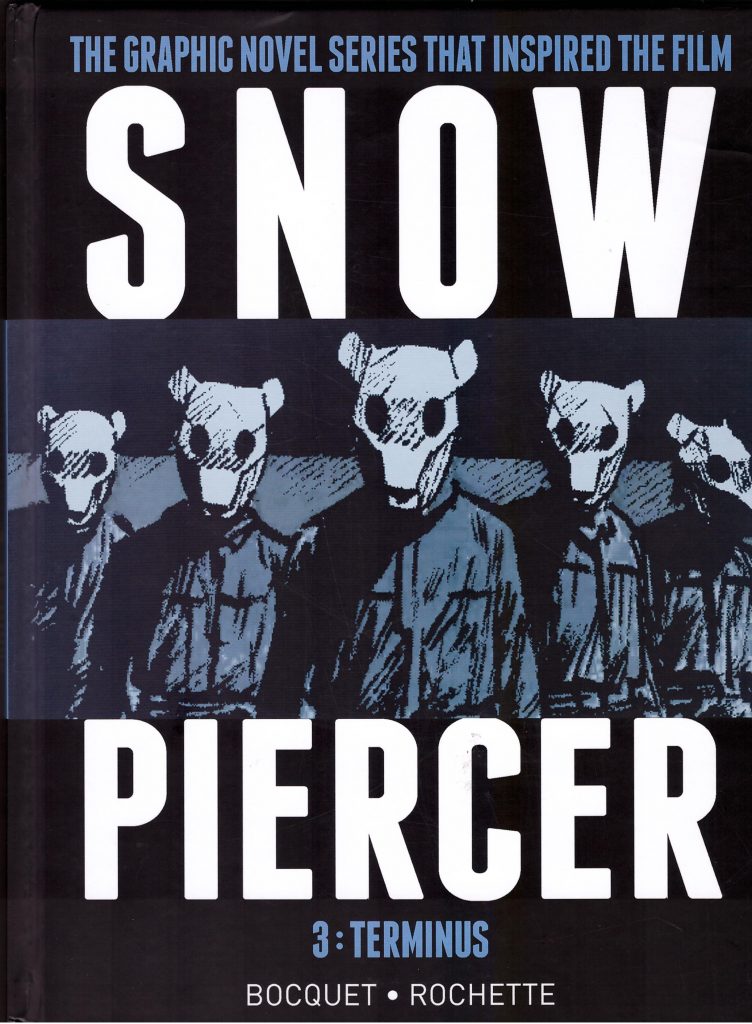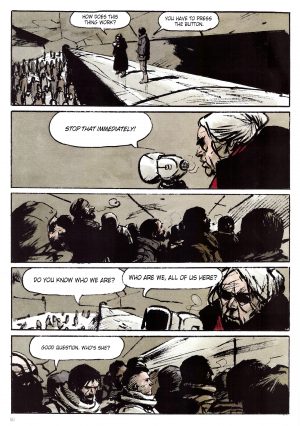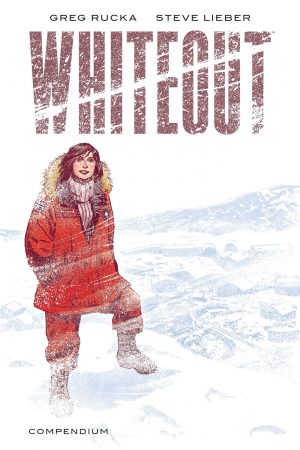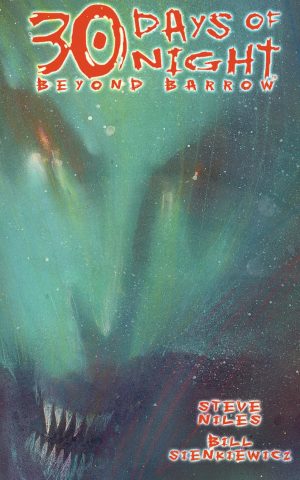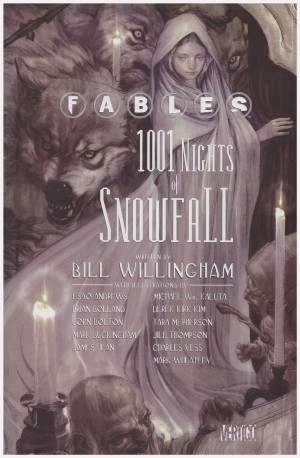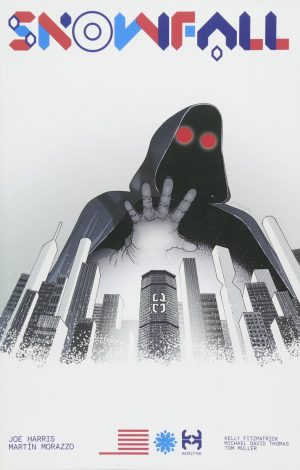Review by Frank Plowright
With a film of the story he’d first drawn in 1982 imminent, Jean-Marc Rochette enlisted the help of writer Olivier Bocquet to create a continuation to the saga of trains perpetually circling an Earth that’s otherwise reverted to an ice age. Bocquet picks up immediately after the bleak ending of The Explorers where hope was extinguished, and cleverly offers renewed hope. No matter if there are no people, that music was playing and transmitted means a power source is still operational in the glacial wastes, and that may be a form of salvation.
Bocquet plotted the story with input from Rochette, who initially indicated scenes he wanted to draw, then commented invaluably on elements Bocquet conceived. This is a seismic shift in Snowpiercer, as the train and its forlorn endless journey takes a lesser role, and the cast, who’ve always been important, a greater one. Until now a privileged elite have controlled the train, but their time has run out, and a president has been elected by the masses, but what’s her agenda? Also relevant to begin with are three infant children, genetically structured to have some immunity to the intense cold, but the focus this time is explorer Val Kennel, instrumental in The Explorers’ finale, but sidelined for much of the remainder. She’s tasked with investigating where the train has come to a stop, a station as it happens, and the creators have a nice touch in making the everyday to us seem exotic to those generations in the future who’ve never seen giant poster advertising or sliding doors.
Rochette’s style has evolved considerably since 1982, and he’s become ever more impressionistic. Without reference to names it would sometimes be difficult to know who’s speaking, but there is a solution. Bocquet’s story involves a surreal element of a community all wearing mouse masks. Mickey Mouse is out, so Rochette supplies a more angular version of the mice seen in Art Spiegelman’s Maus. It’s a clever touch for anyone picking up on it, because in some ways it suggests the victims becoming predators. Snowpiercer began with Cold War analogies, and this suggests allegories to more current political tensions. As before, Rochette keeps his colours extremely muted with the exception of one over-indulgent and artificially melodramatic scene involving a lot of red. The muting is effective, creating a twilight world of little hope.
While Terminus is a serviceable adventure thriller that perpetuates Snowpiercer’s downbeat atmosphere, removing the central idea of communities surviving on ever-circling trains damagingly dispenses with the single unique element. Bocquet’s substitution of an eccentric society run to a personal vision is creative, but not startling, although of interest is that he throws in issues that extrapolate what would today be considered extreme views, so running a disturbing undercurrent. Unlike the previous graphic novels there is a definitive ending to the story if you wish to take one of hope rather than disappointment as previously.
Rochette returns to Snowpiercer in 2019 with Extinction telling the story of how the icy world came to be.
